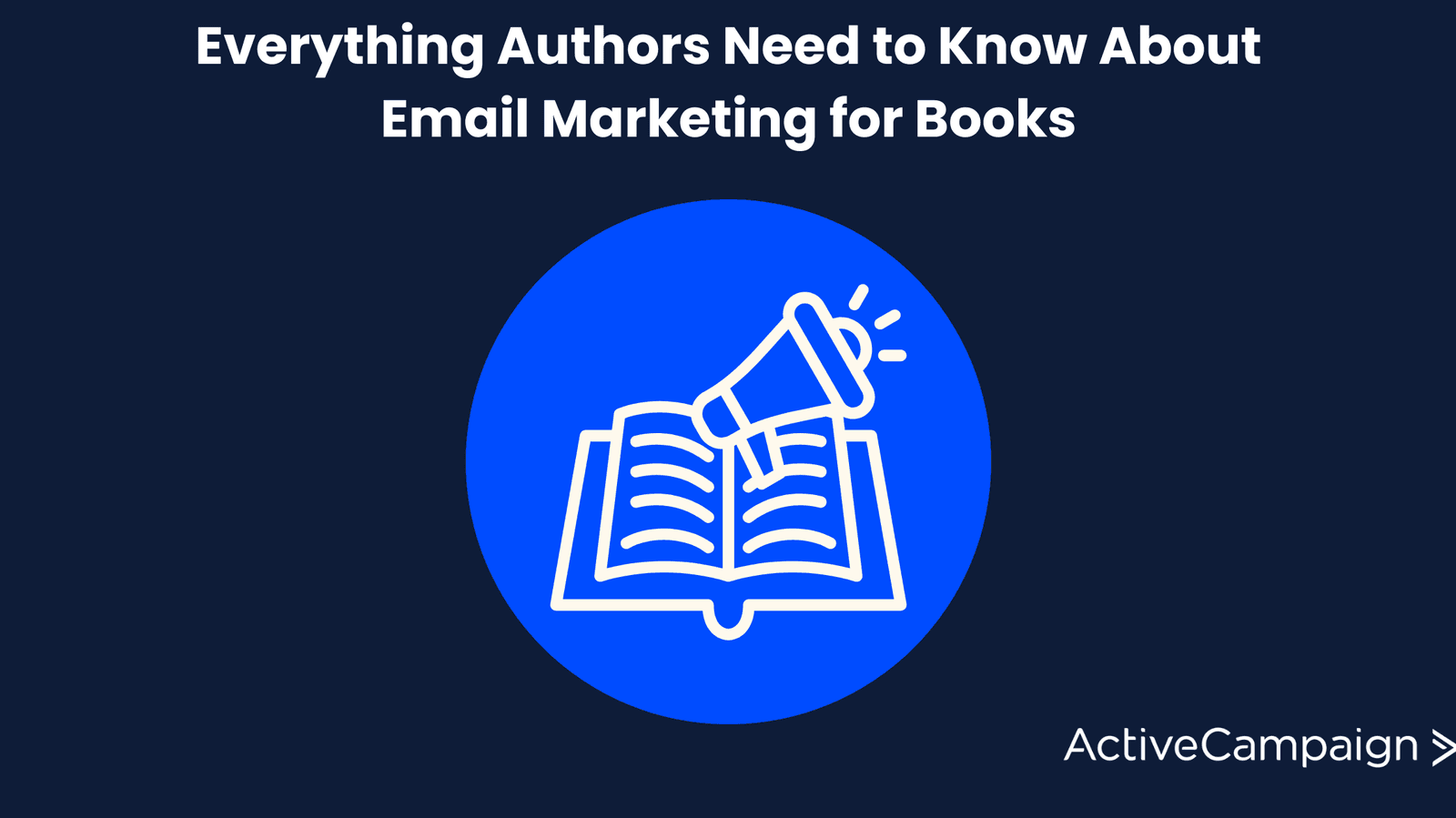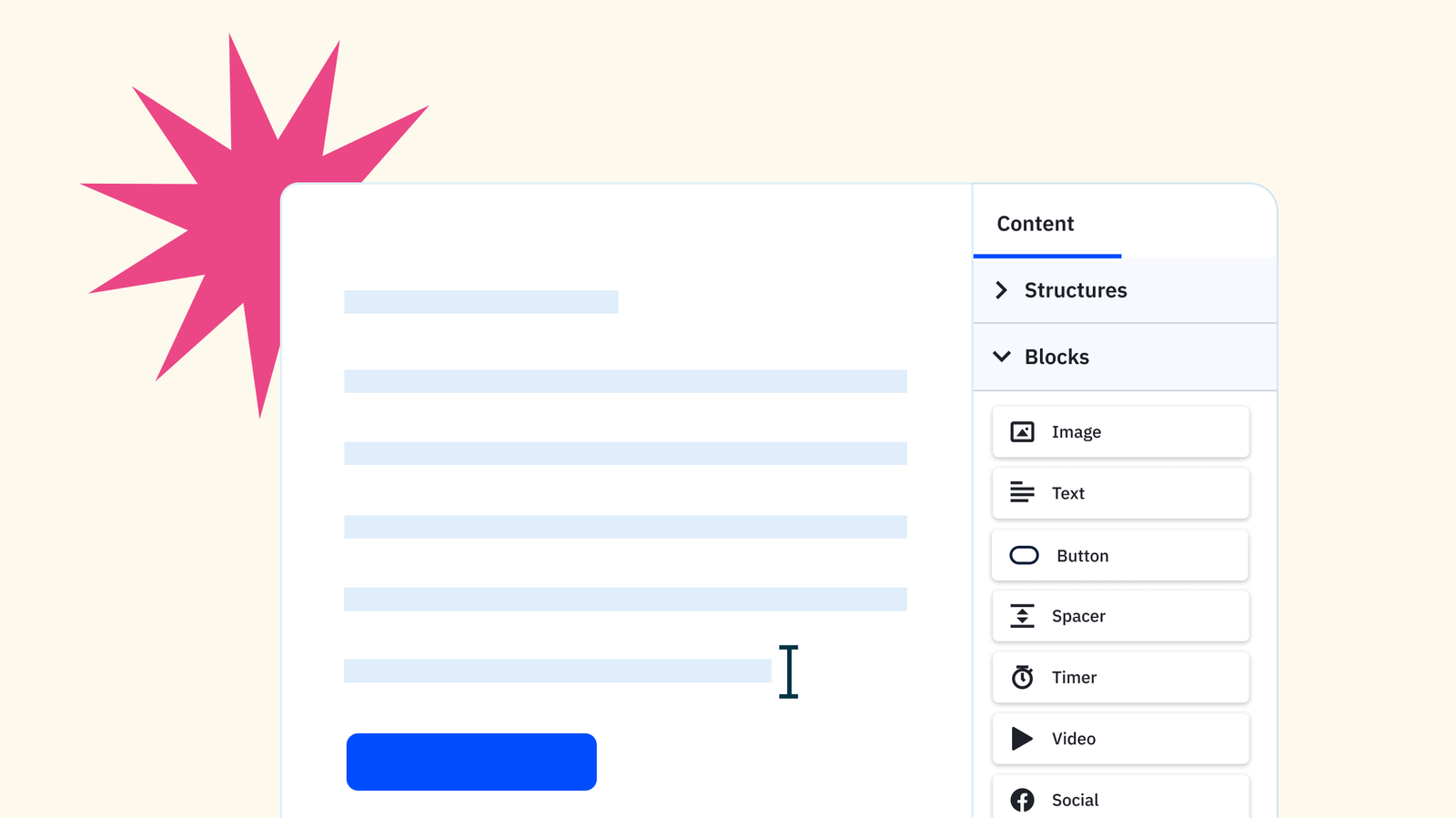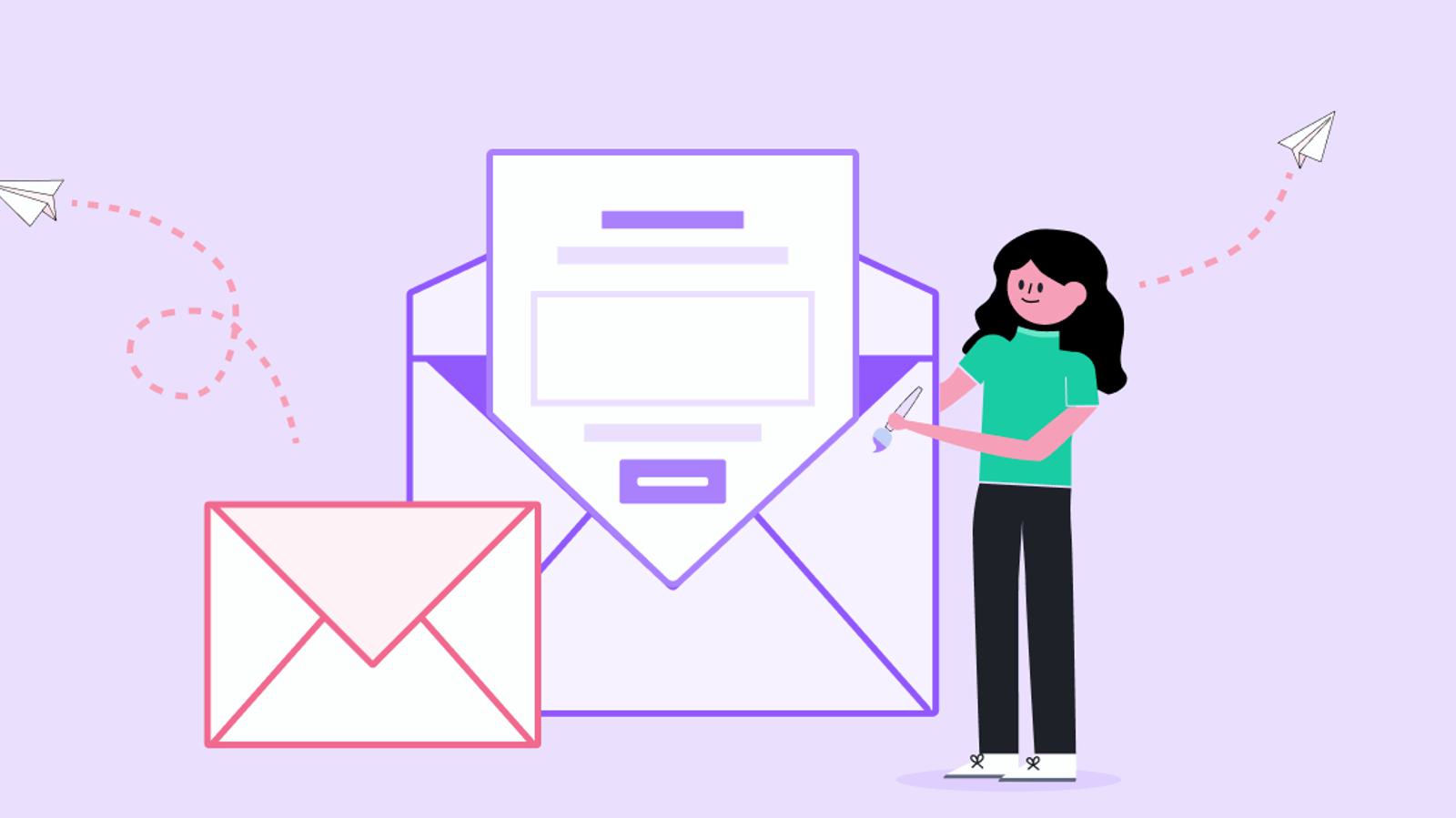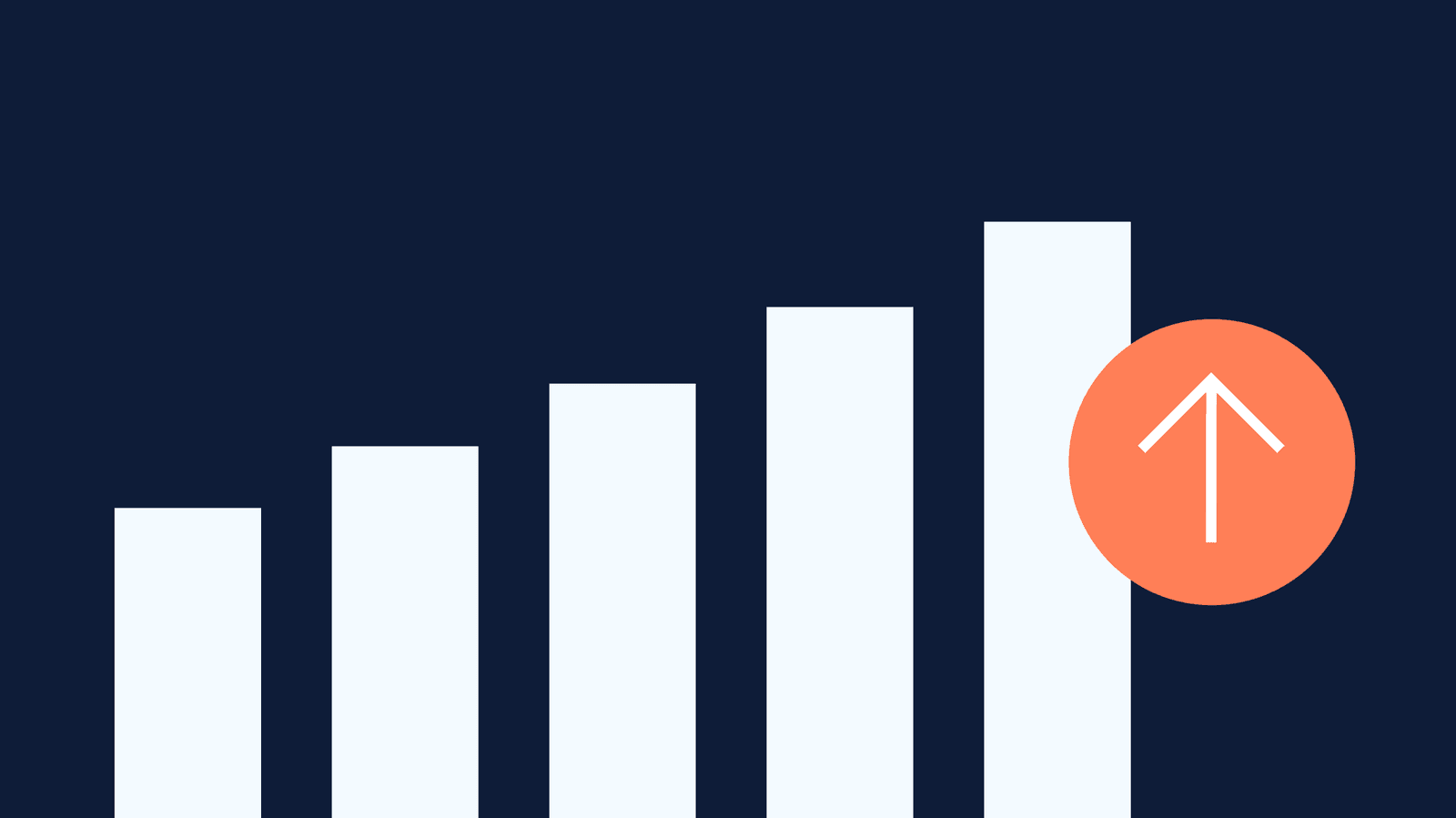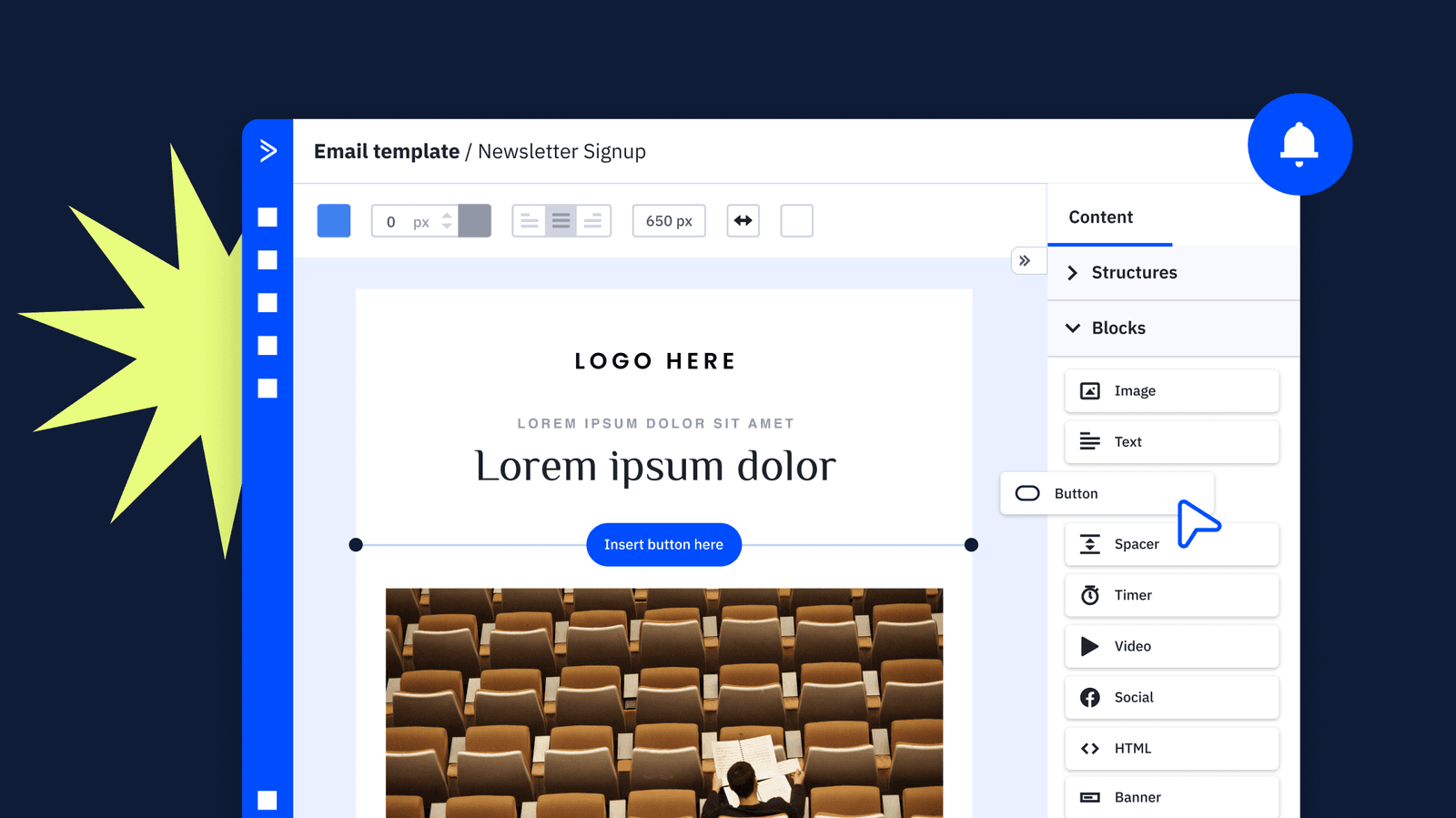You’ve poured your heart into writing a book—but now comes the hard part: getting people to actually read it.
Social media feels like shouting into the void, book promotion is overwhelming, and you’re constantly at the mercy of changing algorithms. You might have hundreds or even thousands of followers, but when it comes time to launch or promote, it’s crickets. If you’ve ever felt like your author platform has no real traction, you’re not alone.
That’s where email marketing comes in. For authors, email isn’t just another tool, it’s your most powerful connection to readers. It gives you a direct line to fans who want to hear from you, and it’s one of the best ways to build lasting relationships, sell more books, and grow a loyal audience over time.
Let’s take the guesswork out of email and show you how to build a real reader community—one email at a time.
Why email marketing is a must-have for authors
If you’re relying solely on social media or third-party platforms to reach your readers, you’re building your audience on borrowed land. Algorithms change. Platforms disappear. But your email list? That’s yours. It’s a direct, uninterrupted line to the people who care most about your work—and that’s what makes email marketing such a powerful tool for authors.
Email helps you promote books while strengthening your author brand and building long-term relationships with readers. You’re not just selling a product, you’re creating a community that follows you from book to book.
What makes email marketing so valuable for authors?
Compared to social media, email consistently delivers higher engagement and ROI. In fact, email marketing remains one of the most cost-effective channels across industries, including publishing.
But beyond stats and numbers, the real value comes from what email allows you to do:
- Speak directly to your readers without intermediaries or platform rules
- Drive higher conversions during book launches, sales, and special events
- Build anticipation for upcoming books, bonus chapters, or cover reveals
- Collect reader feedback and preferences that inform your next release
And the best part? It works no matter how you’re published. If you’re with a traditional publisher, email gives you a platform of your own—one you control. And if you’re an indie author, it’s a direct sales engine, helping you build momentum with each new release.
Email isn’t just about sending newsletters. It’s about creating a sustainable ecosystem around your writing career.ne email (and one reader) at a time.
How authors sell books with email marketing
Email marketing is one of the most powerful ways to grow your audience and boost book sales.
In this section, we’ll break down the exact steps you can take to create, grow, and automate your book marketing emails using proven strategies (and a little help from ActiveCampaign’s ready-to-use recipes). Whether you’re just starting out or looking to upgrade your setup, you’ll find tips here to save time, build better relationships, and sell more books.
Choose an email platform designed with authors in mind
Your email platform is the foundation of your marketing strategy, so it needs to work as hard as you do. Many platforms offer the basics, but if you’re serious about connecting with readers and scaling your efforts, look for a solution that goes beyond just sending newsletters.
ActiveCampaign stands out for authors because it combines automation, personalization, and segmentation tools with deep reporting and easy-to-use templates. It’s flexible enough for beginners but powerful enough to grow with you.
Here’s what to consider when picking your email platform:
- Budget flexibility: Make sure your platform has options that fit your needs, from free plans with the basics to premium tiers with advanced automation.
- Time-saving automation: Choose a tool that lets you set up smart automations for things like welcome emails, pre-order sequences, or reader magnet delivery.
- Customization options: Look for templates and workflows to tailor to your brand and books easily.
- Integration-friendly: Your email tool should connect with your website, book retailer pages, and social media platforms to keep everything working smoothly.
Scalability: ActiveCampaign makes it easy to grow your mailing list and impact with features like behavior-based automations and segmentation, so your emails always hit the mark.
Pro tip: Some platforms even offer free email marketing tools that help you get started without a big budget.
Create irresistible reader magnets with pre-orders and free chapter giveaways
When it comes to email acquisition strategies, few things beat a good lead magnet.
Reader magnets are the bait that get readers to bite—and if you're not offering something valuable in exchange for their email address, you're missing out. Pre-order bonuses and free chapter giveaways are two of the most effective ways to build your list while generating excitement for your book.
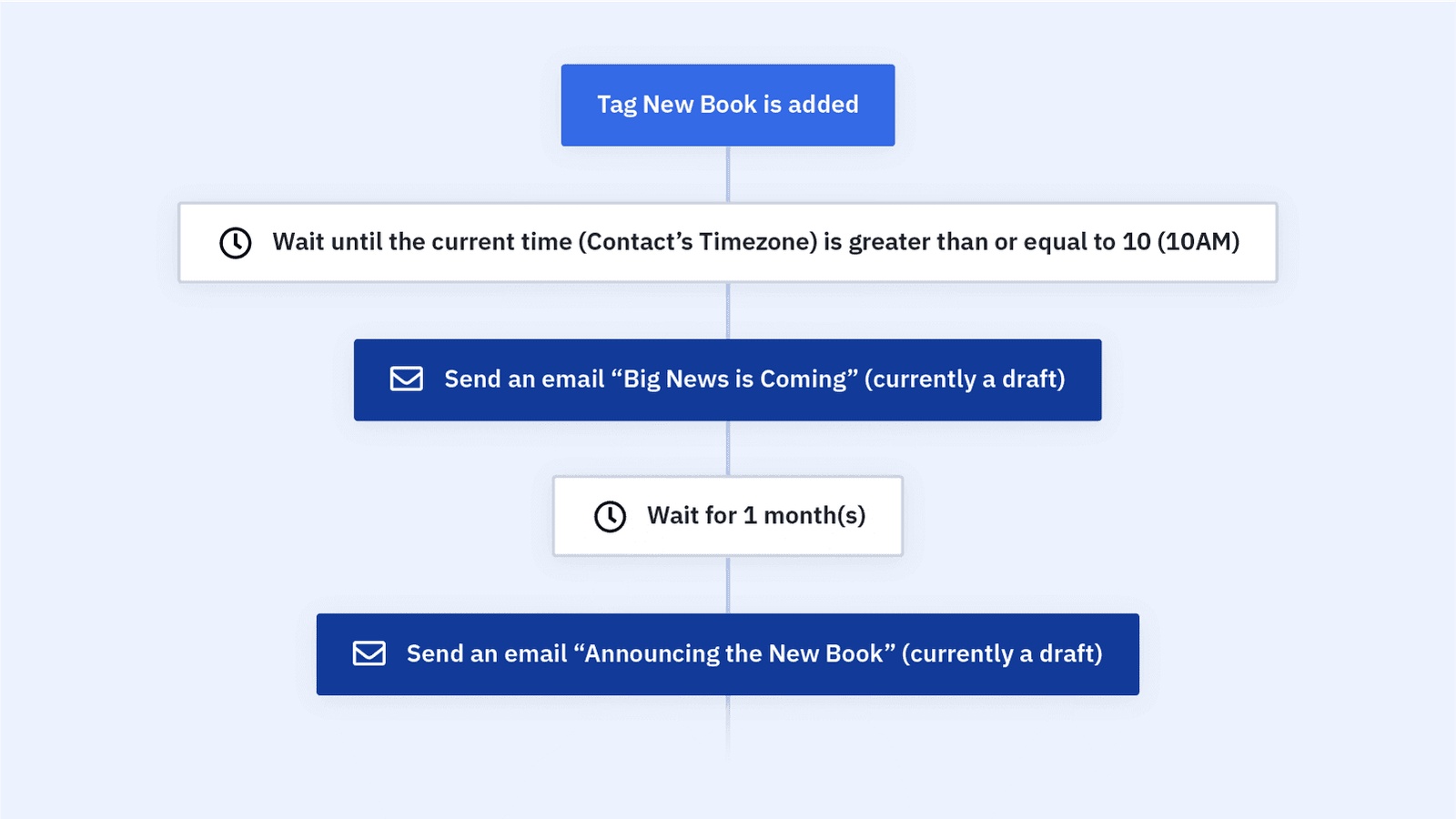
Using ActiveCampaign’s Book Pre-Order and Free Chapter Giveaway recipes, you can automate delivery and track engagement without lifting a finger.
But you don’t have to stop at chapters. Get creative. Some authors offer short stories tied to their main series, “deleted scenes,” or even character interviews that give readers extra insight into their favorite worlds.
Once you’ve got your magnet, promoting it is key. Share it on your website, across your social platforms, or even inside your book’s back matter. With ActiveCampaign, you can set up automations that deliver these magnets instantly when someone signs up, giving readers a seamless, value-packed experience from day one.
Pro tip: Make sure your landing page has strong opt-in copy that clearly communicates the value of signing up.
Leverage your book as an email list and relationship builder
Your book isn’t just a product, it’s a platform. Every reader who finishes a chapter is a potential subscriber, and you should make it easy for them to stay connected.
Start by including newsletter sign-up links within your ebook and consider adding a QR code in your print books that sends readers directly to your signup page. This makes it easy to collect email addresses in every book you put out.
Use ActiveCampaign to track which titles or editions bring in the most new subscribers, and tailor your strategy based on real results.
The key is to make your ask feel natural. Use calls-to-action that align with your tone, like inviting readers to get exclusive behind-the-scenes content or early access to your next release. And once they’re on your list? Keep the momentum going with timely book recommendations using ActiveCampaign’s Book Recommendation recipe. This not only boosts engagement, it turns readers into loyal fans who are excited for what’s next.
Encourage post-purchase reviews and create VIP segments for superfans
Once someone finishes your book, the journey doesn’t stop. Engaged readers are far more likely to leave reviews, recommend your book to others, and buy from you again. But you have to make it easy for them to do so.
Start with a simple request. Using ActiveCampaign’s Book Review Request recipe, you can automatically follow up with recent buyers and gently prompt them to leave a review while the book is still fresh in their mind.
To take it further, consider creating VIP segments for your most loyal readers. These superfans are often eager to receive early access to new content or behind-the-scenes extras. And they’re the ones most likely to spread the word organically.
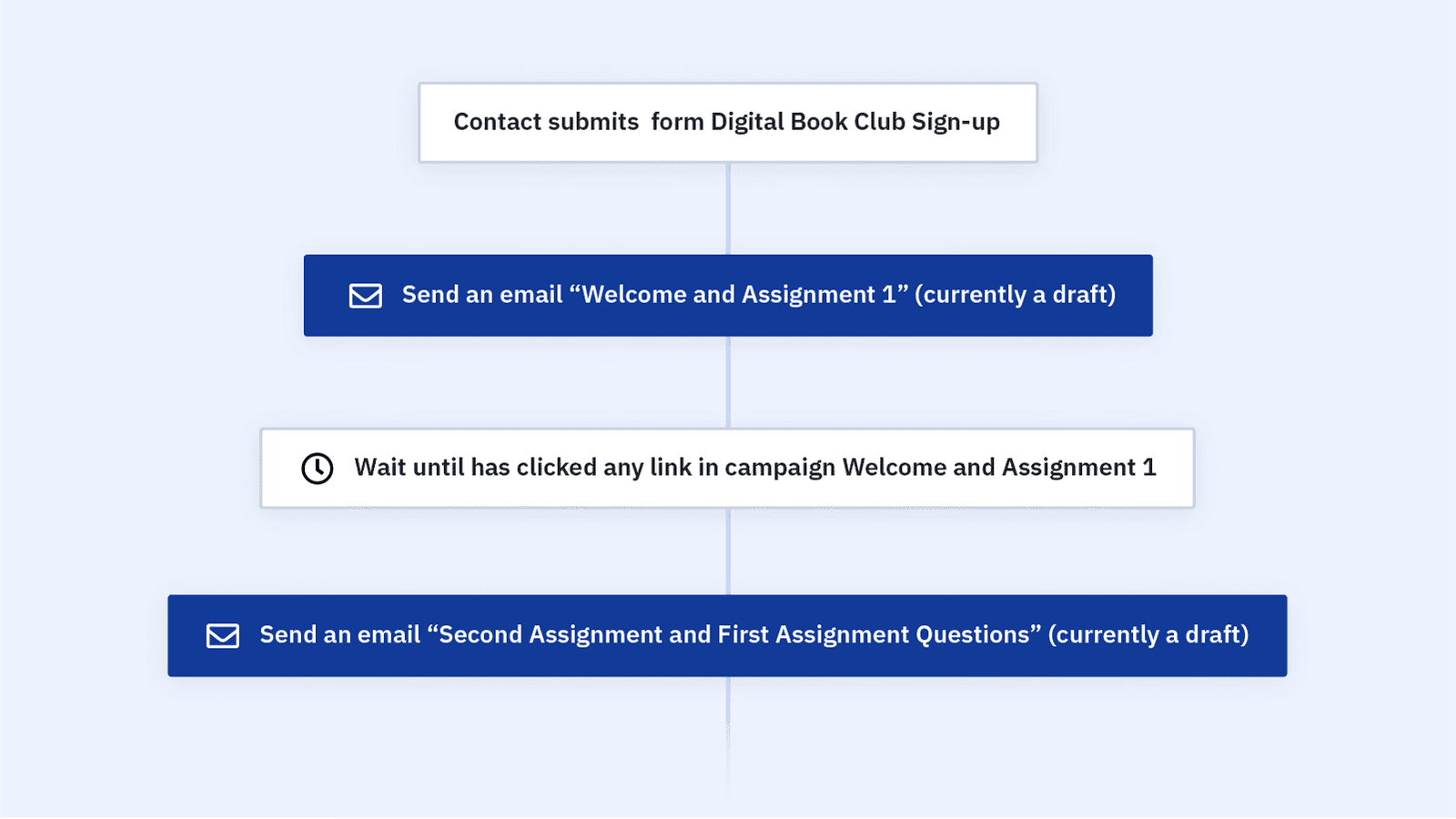
Use ActiveCampaign’s Online Book Club or Social Media Book Club recipes to invite highly engaged fans into exclusive communities.
Automation can help you identify these readers based on their email activity, purchases, or event signups. Once you’ve spotted them, keep them close: nurture them, reward them, and turn them into your biggest advocates.
Write subject lines that boost open rates and encourage event sign-ups
You could write the most engaging email ever, but if your subject line falls flat, nobody’s going to see it. That’s why nailing your subject lines is a game-changer, especially when promoting events, workshops, or launches.
Think of your subject line like the headline of an article: it should promise value, spark curiosity, or create urgency. For example, “[First Name], want a sneak peek at my next book?” or “3 seats left: your VIP invite to the writing workshop.”
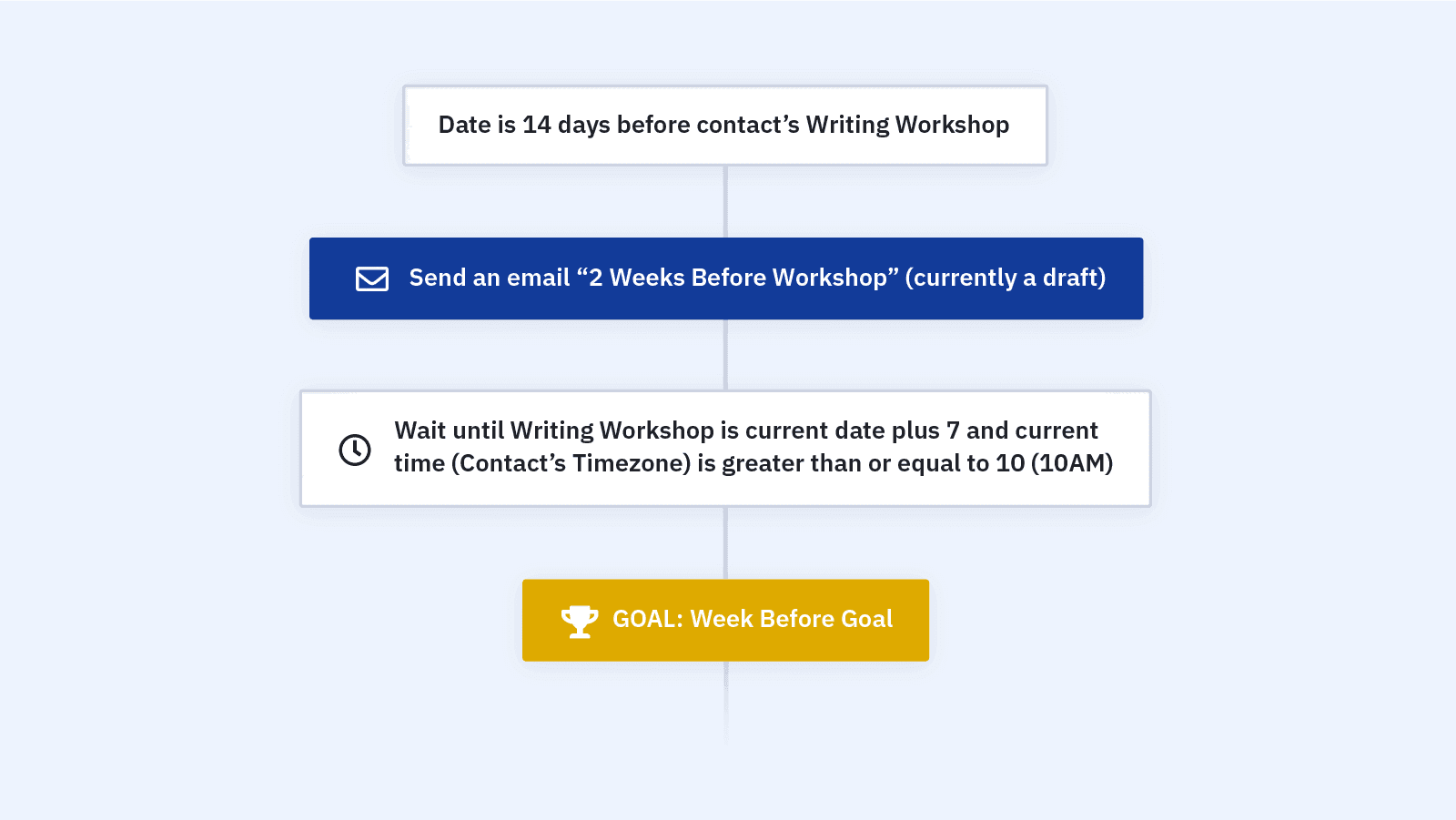
Using ActiveCampaign’s Upcoming Writing Workshop Email Series and Text Reminders recipes, you can create multi-touch campaigns that keep your audience informed and excited without spamming their inbox or blowing up their phone.
Bonus: A/B test subject lines and timing to see what resonates best.
Not sure how to walk the line between click-worthy and clickbait? Try pairing urgency (“Last chance!”) with clarity (“to join my free writing Q&A”)—and always aim to deliver exactly what you promise.
Pro tip: Want to sharpen your writing game? Study some of the best copywriting books and apply their lessons to your emails.
Run cross-promotion strategies with other authors
One of the most effective ways to grow your email list and expand your reach is by teaming up with fellow authors. Cross-promotion gives you access to highly targeted, already-interested readers without spending a dime on ads.
Start with newsletter swaps or joint promos where you each introduce your lists to one another’s books. You can also collaborate on multi-author bundles, giveaways, or even anthologies to grow your shared audience.
The key is finding author partners who write in similar or complementary genres. Make sure any cross-promotions benefit both sides equally, and always be transparent with your readers about why they’re seeing a new name in their inbox.
Once a campaign is complete, don’t forget to track your results. Look at new subscriber counts, click-through rates, and even sales to measure whether the partnership was worth repeating.
Craft engaging emails for your reader community
Your email list isn’t just a place to promote—it’s a space to connect. Readers who sign up are inviting you into their inbox, and that’s a privilege you should treat with care.
The best author emails don’t feel like marketing. They sound like a friend checking in with something exciting to share. Aim to strike a balance between value-packed content (like writing updates, behind-the-scenes stories, or reading recs) and promotional content (like book launches or discounts).
Developing a consistent voice is key. Whether you’re witty, heartfelt, mysterious, or motivational, let your tone reflect your brand as an author. Readers who vibe with your voice are more likely to stick around and look forward to hearing from you each time you hit send.
Check this out: Emails with personalized messages see a 29% increase in open rates and 41% higher click-through rates than generic ones.
Whether you're sharing behind-the-scenes updates or pulling inspiration from your favorite copywriting quotes, readers appreciate the human side of your process.
Design reader-friendly email templates
A beautifully written email can still fall flat if it’s hard to read or navigate. Email design plays a huge role in how readers interact with your content (and whether they stick around).
When designing your emails, think mobile-first. Most readers are opening from their phones, so your layout should be clean, scannable, and easy to tap through. Use a clear visual hierarchy (like bold headlines, short paragraphs, and obvious CTAs), and don’t overload your emails with too many images or colors.
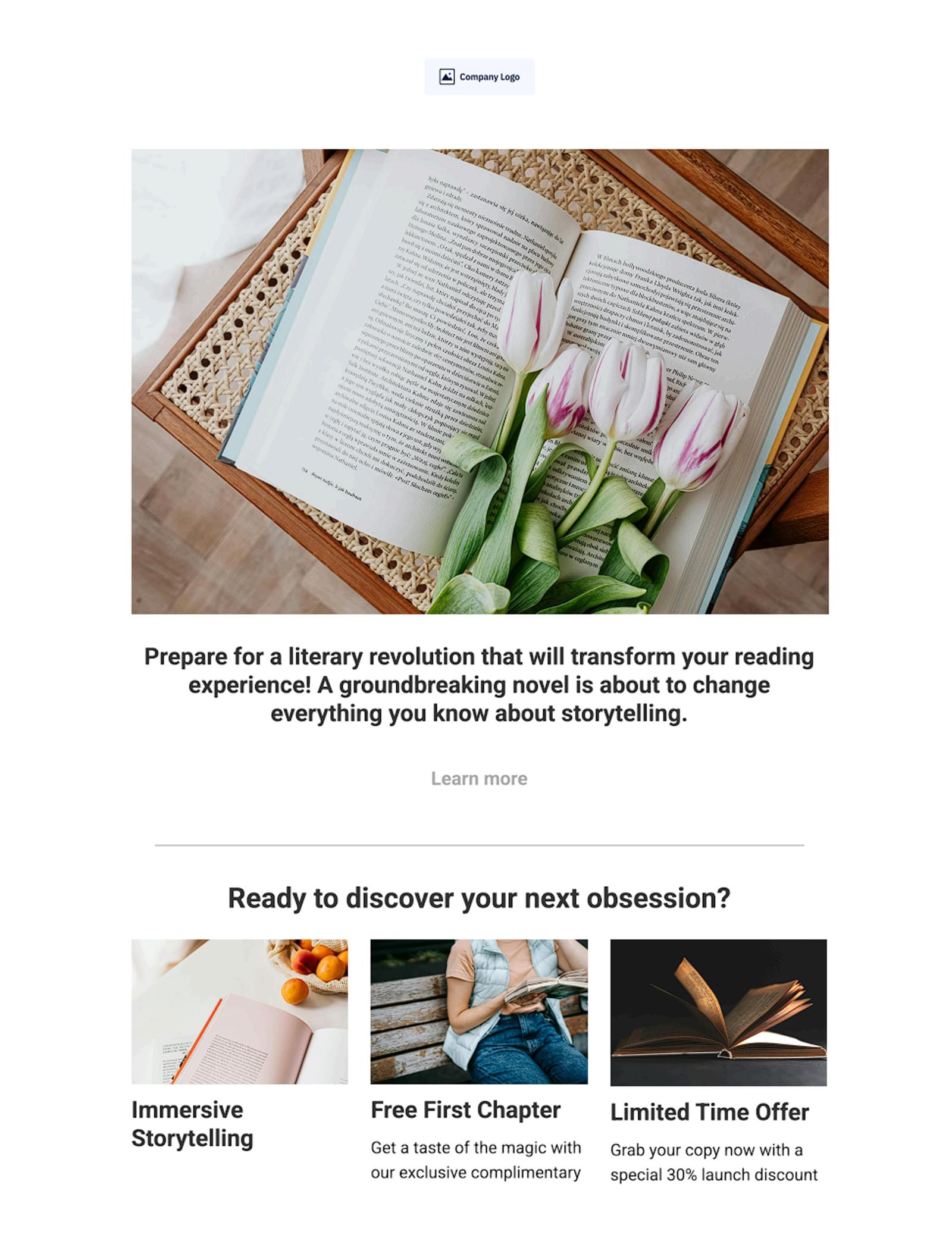
Example of a template created with ActiveCampaign’s AI Template Builder.
And don’t forget to invite feedback. Ask questions, include polls, or open the door for replies so your readers feel like part of your story.
Advanced segmentation tips for targeted reader engagement
If you’ve already got a subscriber list up and running, segmentation is how you take things to the next level. It’s one of the most powerful tools for tailoring your emails to the right readers at the right time. Instead of sending the same content to everyone, segmentation helps you personalize your list of subscribers so you can base emails on behavior, preferences, or how familiar someone is with your books.
Behavior and familiarity-based segmentation for personalized journeys
Not all readers are at the same stage in their relationship with your books. Some are superfans who snap up every release, while others are still figuring out if they’re even interested in your next book. Segmentation helps you meet each of them where they are—whether with a gentle nudge or exclusive content they’ll love.
Behavior-based segmentation lets you track subscribers' interactions with your emails, website, and store. Did they click on a link to your new release? Download a free chapter? Buy the entire backlist? These actions tell you a lot about what kind of messaging will resonate next.
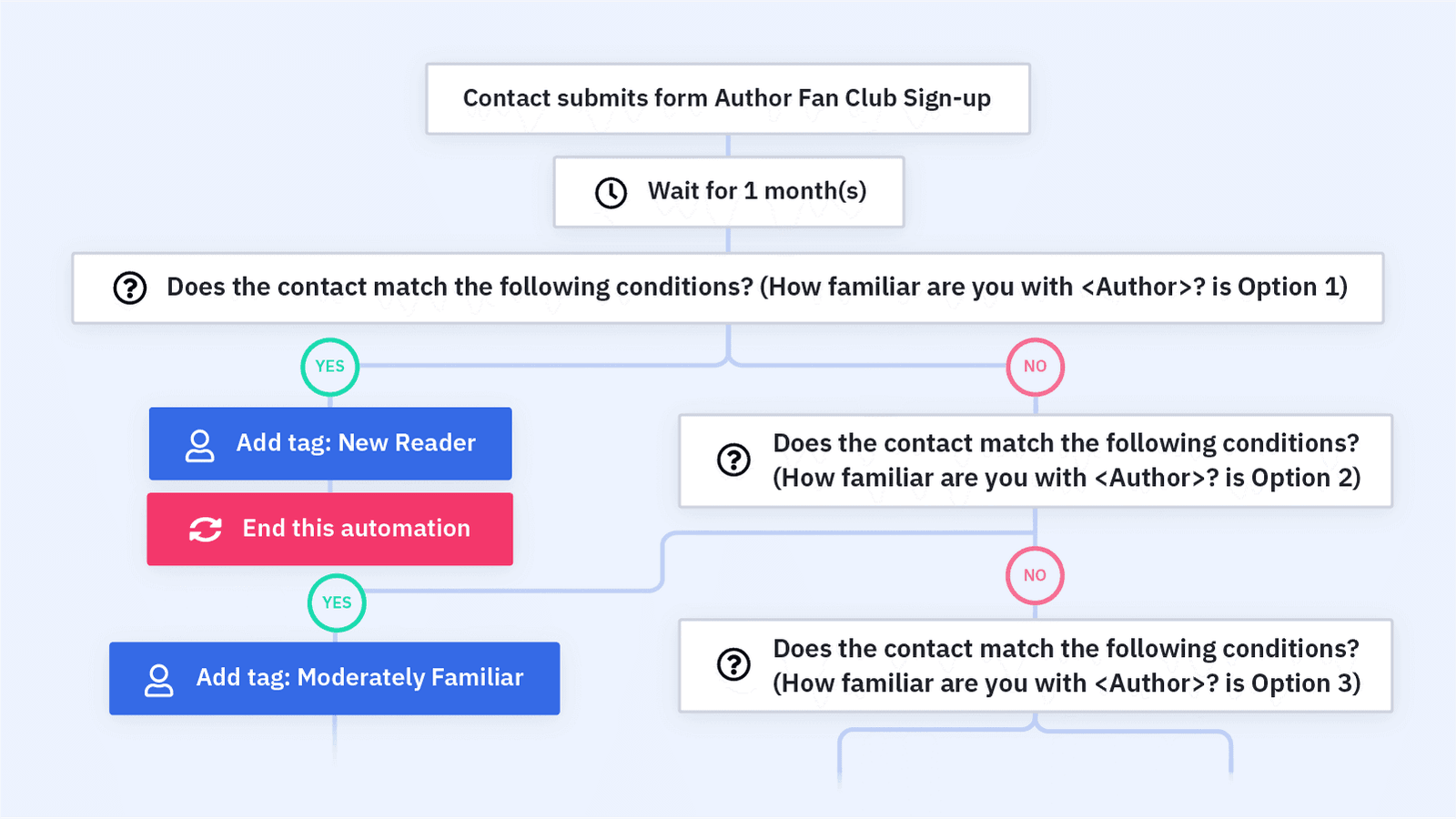
Using ActiveCampaign’s Gauge Brand Familiarity recipe, you can automatically segment readers based on how closely they’re engaging with your brand. This helps you decide who should get early access, extra bonuses, or just a warm welcome and an invite to learn more.
You can also segment by purchase history and reading behavior. For example, someone who consistently clicks on emails about your sci-fi titles might be a good candidate for a sneak peek of your next space opera—even if they haven’t bought it yet.
If you’re not segmenting your email distribution list by interest or behavior, you’re leaving engagement on the table.
Segment by genre preferences and reading habits
Segmenting by reader interest is non-negotiable if you write across genres or have multiple book series. You want to ensure fans of your cozy mystery series aren’t getting updates about your new dystopian thriller (unless they’ve shown interest in both).
Start by collecting genre preferences through your sign-up forms or follow-up emails. A simple “What do you like to read?” checkbox list can go a long way toward tailoring content to your audience.
Once you’ve collected those preferences, you can send the right content to the right people. ActiveCampaign’s Email Book Recommendations Based on Contact Preference recipe helps automate this process by sending genre-relevant recommendations without constant manual oversight.
Pro tip: If you write in multiple genres, you can also cross-promote strategically. For example, if your romantic fantasy fans love your emotionally driven characters, they might enjoy your contemporary romance too, especially with a nudge in the form of a targeted email.
ActiveCampaign’s tagging and segmentation tools make this easy to manage, even as your list grows. The result? More engagement, higher click-throughs, and a reader base that feels like you’re speaking directly to them.
Measuring the success of email marketing campaigns when promoting your book or events
You’ve put in the work to grow your list and send great emails—but how do you know if it’s actually working? Tracking the right metrics can help you connect your email marketing efforts to real results, like more book sales, better reader engagement, and stronger launches. This section breaks down the essential numbers you should watch and how to use those insights to improve.
Understand email performance metrics
Before optimizing anything, you need to know what "good" looks like. Open rates, click rates, and conversion rates are the big three, but the real magic happens when you learn to spot trends over time.
Example: Your open rates may dip every time you send an email on Monday mornings, or your click rates spike when you use reader polls or behind-the-scenes content.
Look at your metrics in context. If something's underperforming, don’t panic, use it as a clue. Was the subject line too vague? Was the CTA buried at the bottom? By watching these patterns, you’ll learn what your audience wants and how to meet them where they are.
Track ROI and connect email campaigns to book sales
At the end of the day, you want to know whether your emails are helping you sell more books. With the right tracking tools and attribution methods, you can draw a clear line from inbox to income.
Start by setting up UTM tracking links for any email that leads readers to your sales page. If you're using a platform like ActiveCampaign, you can also enable conversion tracking and use pixels to follow readers from click to checkout. This helps you see exactly which emails drive sales, not just clicks or opens.
From there, you can calculate the real value of your email list.
Example: If your list generated $500 in book sales last month and you have 1,000 subscribers, that’s a $0.50 value per subscriber. This metric helps you determine how much effort (or budget) to invest in growing and nurturing your list.
Improving that number often comes down to the experience you’re creating. Try tightening up your CTAs or segmenting your list so readers receive book promos that match their interests. The more relevant your emails, the more likely your subscribers will convert.
And because ActiveCampaign connects your emails with your contact records, you can track every step of the journey—from sign-up, to engagement, to purchase. That means you’re not just guessing what worked, you’re watching it unfold in real time.
Use data to refine your email strategy
Data doesn’t just tell you how you did, it tells you what to do next. Every open, click, and unsubscribe is a signal you can learn from. Maybe your fantasy readers love character interviews, while your nonfiction list responds better to how-to content. Maybe sending emails on Sundays gives you better engagement than Wednesdays.
With that knowledge, you can test small changes (like subject lines or CTAs) and see what moves the needle. Over time, you’ll build an email strategy that’s more effective and easier because you’re not guessing. You’re learning from your readers and writing emails they actually want.
Take your book sales and marketing to the next level with ActiveCampaign
If you're serious about growing your audience, launching your books with impact, and building lasting relationships with your readers, email marketing is the tool that gets you there. And ActiveCampaign is the platform that helps you do it all—without burning out.
From automating your welcome emails to segmenting superfans and tracking sales in real time, ActiveCampaign gives you the tools to do more with less effort and grow at your own pace.
You’ve seen what’s possible. Now it’s your turn.
Ready to see what it can do? Start your free trial today and take your author marketing to the next level.
Email marketing FAQs from authors
Lingering questions? We've got you covered.
How often should authors send newsletters?
Finding the right rhythm for your email schedule is all about balance—staying top-of-mind without wearing out your welcome. If you ghost your list for months, readers might forget why they signed up. But if you’re emailing every other day, you'll likely see unsubscribes pile up.
A good rule of thumb is letting your content and audience guide you.
For example:
- Monthly or biweekly newsletters are great for most fiction authors.
- Weekly emails might make more sense during a launch or promotional push.
- Special announcements, events, or flash sales can be sent as needed (just don’t overdo it).
Once you have a baseline, experiment. A/B test your send frequency to see how readers respond. Look at open rates, unsubscribes, and replies to dial in what works best for your audience.
What email content gets the best engagement from readers?
The emails that perform best are the ones that feel personal, not promotional.
Try mixing in a few of these high-performing content types:
- Character deep dives or short “deleted scenes”
- Polls and reader surveys (great for engagement and feedback)
- Book recommendations (especially from your own backlist or fellow authors)
- Personal stories, writing wins, or lessons learned
Promotional emails should absolutely be part of the mix. But the key is balance. Aim for a 70/30 split between value-driven and promotional content, and always write like you’re talking to your most loyal fan.
How do I convert email subscribers into book buyers?
Your email list is only as powerful as your ability to inspire action, and that starts with clear, compelling CTAs.
Here’s how to boost conversions without sounding like a pushy salesperson:
- Use persuasive but friendly language like “Get your copy now” or “Join the adventure today.”
- Add urgency with limited-time offers or early access for your list.
- Incorporate social proof by sharing reviews, testimonials, or screenshots of reader reactions.
- Offer incentives like a bonus chapter, free novella, or signed bookplate for purchases.
Remember, clear, engaging subject lines and email content matter—so take time to learn how to write great copy that feels both personal and actionable. And, above all, make sure the buying experience is simple and seamless. Fewer clicks = more conversions.
How can ActiveCampaign help me sell more books?
With features like automation, segmentation, and personalization, you can create email experiences that speak directly to each reader, no matter where they are in their journey with your books.
Want to recommend a different series based on past purchases? Done. Need to send a launch day email only to your most engaged fans? Easy. Curious about what content is leading to actual book sales? There’s reporting for that too.
ActiveCampaign gives you the tools to send the right message to the right reader at the right time—all while saving you hours of manual work. That’s the kind of marketing magic that moves books.

